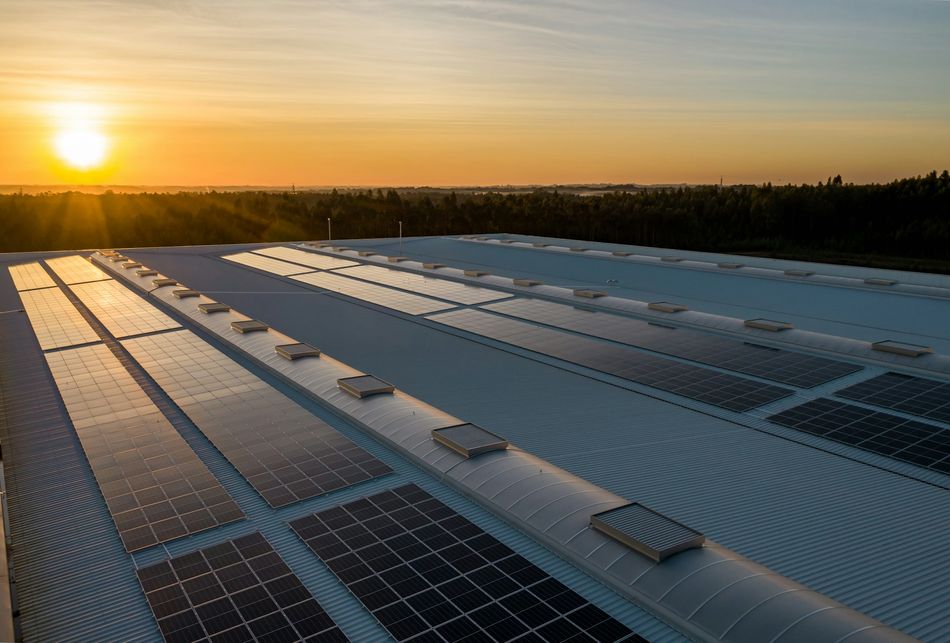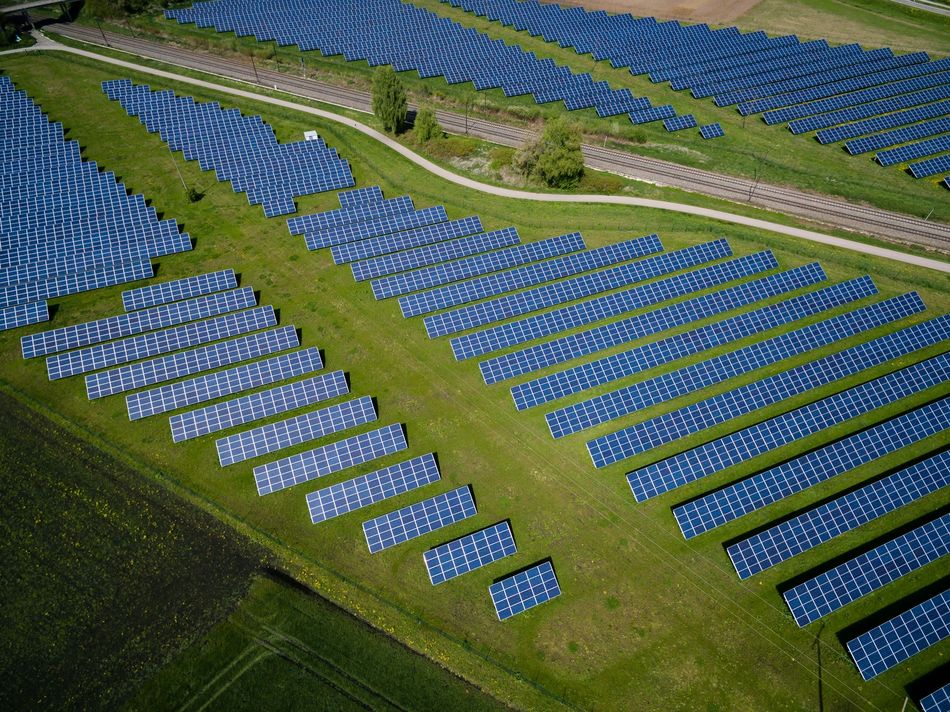Using 2D Materials in Photo-Harvesting Applications
As the world looks to phase out fossil fuels in favor of cleaner, renewable energy sources, more effort is being put into improving existing renewable technologies and creating devices that can harness renewable energy sources in new ways.

Source: Kampan- stock.adobe.com
This article was first published on
resources.mouser.comAs the world looks to phase out fossil fuels in favor of cleaner, renewable energy sources, more effort is being put into improving existing renewable technologies and creating devices that can harness renewable energy sources in new ways. Sunlight captured in solar cells is currently one of the most used renewable energy sources. However, there are also a number of other ways in which sunlight can be harnessed to produce energy.
Given the amount of sun that hits the Earth each day, there is excellent potential for solar-based energy harvesting devices to become one of the front runners in a cleaner and greener society—and expand on their existing position as one of the leading renewable technologies. Designers are testing and using 2D materials in a number of these solar-harvesting systems, from the widespread use of graphene in solar cells to the use of different 2D materials in photocatalytic and photothermal harvesting approaches.
Photovoltaics (Solar Cells)
Of all the solar harvesting methodologies and technologies in existence, solar cells are by and far the most commercialized, most popular, and most efficient choice. There are several bulk solar cells in existence composed of silicon and perovskite materials. In addition, a number of approaches are being developed where 2D materials (and other nanomaterials) are being used to either improve the performance of bulk silicon solar cells or offer a way to create much thinner and/or more flexible solar cells. In the latter, there are already a number of flexible organic solar cells; however, the active materials tend to suffer from a much lower performance than inorganic materials, so 2D materials offer a way of providing thinner solar cells with much-improved performance.
Many devices are in existence where doped graphene has been used as the photoactive material in the semiconducting photovoltaic junction within solar cells, sometimes on its own and other times in conjunction with silicon in bulkier solar cells. Beyond this, graphene and its derivatives are touted as an alternative for the hole transport layer instead of expensive noble metals, such as silver and gold, in an attempt to lower the cost of large-scale solar cells. Graphene is also used in conjunction with silicon in a number of other hybrid devices, including in the creation of thinner, flexible and semi-transparent solar cells.
While graphene is gathering the most interest, graphene and transition metal dichalcogenides (TMDCs) are being integrated into different solar cells—because of their stability and resistance to several potentially degrading stimuli—to improve their long-term stability and ensure that they run optimally for longer. These 2D materials are being integrated into a wide range of bulk solar cells on a commercial level, including in silicon and perovskite solar cells as well as in tandem solar cells.
In recent years, the interest in flexible solar cells has significantly grown, and while graphene was the first 2D material tested for solar cells, the area has since expanded and continues to do so. In recent years, TMDCs have been used alongside graphene to create efficient, flexible solar cells and perovskite materials are now being made into 2D sheets to try and emulate the success of the bulkier perovskite solar cells—but in the form of a much smaller and flexible solar cell. 2D perovskite solar cells have not yet been able to reach the heights of their bulkier counterparts, but it is a much newer addition to the 2D family, so there is still plenty of time for them to play a part in 2D material-enhanced solar cells.
Photocatalytic Harvesting
Photocatalytic reactions generate new greener fuels and are different from many other energy harvesting technologies where the direct output is electricity. In photocatalytic harvesting, the energy from sunlight is harvested to produce fuel, which can then be used to power devices and electronic systems. Photocatalytic harvesting is currently a promising approach in water splitting technologies to produce hydrogen fuel.
Photocatalytic harvesting occurs when semiconducting materials are used. The photocatalytic harvesting occurs because the photons from the sunlight (with a high energy) generate an electron-hole pair in the semiconducting material once absorbed. However, these photogenerated excited states tend to be unstable, so the charge carriers recombine. During this separation and recombination process, the electrons and holes are transported across the surface of the material, which either reduces or oxidizes the absorbed atoms. It is this process that leads to the generation of hydrogen gas, and there is a similar photocatalytic process that can be used to generate oxygen molecules as well (often at the same time).
Photocatalytic reactions can be initiated using a number of materials, and a number of different semiconducting 2D materials are used for these photocatalytic harvesting reactions. In many cases, the exposed edges on the 2D sheets offer an effective site for the photocatalytic reactions to take place. TMDCs, such as molybdenum disulfide, have gathered a great deal of interest because the sheets actively absorb hydrogen ions. Graphene and its derivatives—especially doped versions to make them semiconducting—are also well-tested materials because the high surface area of both graphene and TMDCs, alongside their absorption and electrical conductivity properties, make them suitable catalytic sites for hydrogen evolution reactions (HER) to produce hydrogen fuel.
Photothermal Harvesting
Photothermal harvesting approaches once again offer a different approach to many conventional solar harvesting technologies. In these harvesting methods, photothermal materials are used to absorb light energy and convert it into heat energy. 2D materials have a range of optical properties that can be harnessed to absorb light waves—and subsequently convert it into heat—with some of the 2D materials exhibiting optical properties that are unique and not found in other material classes, while others having very beneficial properties in general.
2D materials are known to absorb wavelengths of electromagnetic radiation across a wide spectrum, including in the visible and near-infrared regions. However, these applications are very different in that these approaches are typically used in medical applications to enable different treatments to take place. The absorption of light and generation of heat means that different medical treatments can take place without the need for more invasive approaches. For example, heat is generated in the form of a vibrational energy, and this energy can be used to target and kill cancer cells.
It's an approach that is more niche in nature, and while it doesn’t power devices, different 2D materials—from graphene derivatives, to TMDCs, to MXenes—are being used to harvest light to provide new and efficient medical treatments, and photothermal therapies are becoming an interesting application area for 2D materials alongside the more conventional solar energy harvesting operations.
Conclusion
Solar harvesting, in the form of solar cells, is already an established technology, but 2D materials are offering a way of improving the efficiencies and long-term stabilities of solar cells as well as offering new ways of creating thin, flexible, and transparent solar cells. Beyond solar cells, 2D materials offer great potential for creating hydrogen fuel via photocatalytic reactions and harvesting light for advanced cancer therapies. As modern society looks toward more ways of harvesting our natural environment, 2D materials offer a way to harvest solar rays into a usable output efficiently.

